- Pentas lanceolate for Your Garden: A Perfect Bouquet Plant
- Overview
- Description
- Benefits
- Growing Tips
- Uses
- Benefits of Pentas lanceolata for Your Garden
- 1. Attract Pollinators
- 2. Long Bloom Period
- 3. Low Maintenance
- 4. Versatile Use
- 5. Cut Flower Potential
- Growing Pentas lanceolate: Tips and Tricks
- 1. Planting
- 2. Watering
- 3. Fertilizing
- 4. Pruning
- 5. Pests and Diseases
- 6. Lure Pollinators
- 7. Propagation
- 8. Overwintering
- Choosing the Right Variety of Pentas lanceolate
- Factors to Consider:
- Popular Varieties:
- Best Soil Conditions for Pentas lanceolate
- Well-Drained Soil
- Loamy Soil
- Fertile Soil
- Soil Preparation
- Mulching
- Watering and Fertilizing Pentas lanceolate
- Watering
- Fertilizing
- Pest and Disease Prevention for Pentas lanceolata
- Pest Prevention
- Disease Prevention
- General Care Tips
- Pruning and Maintenance of Pentas lanceolate
- 1. Regular Pruning
- 2. Watering and Fertilizing
- 3. Managing Pests and Diseases
- 4. Winter Care
- Creating Beautiful Bouquets with Pentas lanceolate
- 1. Choose the Right Blooms
- 2. Mix and Match
- 3. Cut and Prepare the Stems
- 4. Arrange with Care
- 5. Use a Clear Vase
- 6. Enjoy Your Bouquet
- Q&A:
- What is Pentas lanceolate?
- Where can I buy Pentas lanceolate plants?
- Are Pentas lanceolate plants easy to care for?
- What are the ideal growing conditions for Pentas lanceolate?
- Do Pentas lanceolate plants attract bees and butterflies?
- Can Pentas lanceolate plants be grown indoors?
- Video: Butterfly Pentas — a Super Plant
If you’re looking to add a burst of color and fragrance to your garden, look no further than Pentas lanceolata. This beautiful flowering plant is not only a favorite of gardeners, but also a popular choice for creating stunning bouquets. With its vibrant blooms and long-lasting flowers, Pentas lanceolata is the perfect addition to any garden or floral arrangement.
The striking colors and intricate flower clusters of Pentas lanceolata make it a standout in any garden. The flowers can range from shades of red, pink, purple, and white, adding a visual feast for the eyes. Not only are these flowers beautiful, but they also emit a sweet and pleasant fragrance that can fill your garden with a delightful scent.
Pentas lanceolata is a versatile plant that can be easily grown in both containers and garden beds. It thrives in full sun or partial shade, making it a great option for a wide range of growing conditions. Additionally, Pentas lanceolata is known for attracting butterflies and hummingbirds, making it a great choice for those looking to create a wildlife-friendly garden.
Whether you’re looking to add a pop of color to your garden or create a stunning bouquet, Pentas lanceolata is the perfect plant for you. With its striking blooms, delightful fragrance, and versatility, it’s no wonder why this plant is a favorite among gardeners and florists alike. So, why not bring a touch of beauty and elegance to your garden by adding Pentas lanceolata to your landscape?
Pentas lanceolate for Your Garden: A Perfect Bouquet Plant
Overview
Pentas lanceolate is a beautiful and versatile plant that is a perfect addition to any garden. With its vibrant colors, ease of care, and ability to attract butterflies and hummingbirds, it is no wonder why this plant is a favorite among gardeners and florists alike.
Description
Pentas lanceolate, also known as Egyptian Starcluster, is a perennial plant that belongs to the Rubiaceae family. It is native to Africa and can reach a height of up to 3 feet. The plant produces clusters of small, star-shaped flowers that come in a variety of colors, including red, pink, white, and lavender.
Benefits
There are several benefits to growing Pentas lanceolate in your garden:
- The vibrant flowers of Pentas lanceolate add a pop of color to any garden, making it an ideal choice for creating eye-catching flower beds or borders.
- Pentas lanceolate is known for its ability to attract butterflies and hummingbirds, making it a great plant for those who enjoy watching wildlife in their garden.
- This plant is low-maintenance and can tolerate a variety of soil conditions, including sandy and loamy soil.
- Pentas lanceolate is also heat and drought-tolerant, making it a perfect choice for gardens in hot and dry climates.
Growing Tips
If you are considering planting Pentas lanceolate in your garden, here are some tips to help you get started:
- Choose a sunny location in your garden to plant Pentas lanceolate, as it thrives in full sun.
- Prepare the soil by adding organic matter to improve drainage and fertility.
- Water the plant regularly, especially during dry spells, and avoid overwatering to prevent root rot.
- Deadhead the spent flowers to encourage continuous blooming.
- Apply a slow-release fertilizer during the growing season to promote healthy growth.
Uses
Pentas lanceolate is not only a great addition to your garden but can also be used for creating beautiful bouquets. The long-lasting flowers and vibrant colors make it a popular choice for floral arrangements. Whether you want to brighten up your garden or create stunning floral displays, Pentas lanceolate is a perfect choice.
| Name | Pentas lanceolate |
|---|---|
| Family | Rubiaceae |
| Height | Up to 3 feet |
| Flower Colors | Red, pink, white, lavender |
| Growing Tips | Sunny location, well-drained soil, regular watering, deadheading, slow-release fertilizer |
Benefits of Pentas lanceolata for Your Garden
Pentas lanceolata, commonly known as Egyptian star cluster, is a flowering plant that offers many benefits to your garden. Here are some reasons why you should consider growing this beautiful plant:
1. Attract Pollinators
- Pentas lanceolata is a magnet for pollinators, such as bees, butterflies, and hummingbirds.
- Its bright, star-shaped flowers and sweet nectar attract these beneficial insects, helping to promote pollination in your garden.
2. Long Bloom Period
- The blooms of Pentas lanceolata can last for several months, providing continuous color to your garden throughout the growing season.
- With a variety of vibrant colors available, such as red, pink, white, and lavender, you can create a stunning and eye-catching display.
3. Low Maintenance
- Pentas lanceolata is a relatively low-maintenance plant, making it perfect for busy gardeners.
- It is drought-tolerant and can thrive in various soil conditions, as long as it is well-drained.
- It also has a good resistance to common garden pests and diseases.
4. Versatile Use
- Pentas lanceolata can be grown in different garden settings, such as flowerbeds, borders, containers, and hanging baskets.
- Its compact size and bushy form make it suitable for both small and large gardens.
5. Cut Flower Potential
- The cut flowers of Pentas lanceolata can be used to create beautiful and long-lasting floral arrangements.
- They add a touch of elegance and color to any indoor space.
Overall, Pentas lanceolata is a versatile and beneficial plant that can enhance the beauty and ecological value of your garden. Consider adding this lovely flowering plant to your garden for a vibrant burst of color and to attract beneficial pollinators.
Growing Pentas lanceolate: Tips and Tricks
Pentas lanceolate, also known as Egyptian starcluster or Egyptian starflower, is a beautiful flowering plant that is perfect for adding color and vibrancy to your garden. Here are some tips and tricks for growing and caring for this stunning plant:
1. Planting
Choose a location in your garden that receives full sun to partial shade. Pentas lanceolate prefers well-draining soil, so make sure to amend the soil with organic matter such as compost or peat moss to improve drainage. Dig a hole that is slightly larger than the rootball of the plant and gently place the plant in the hole. Backfill the hole and water thoroughly to settle the soil.
2. Watering
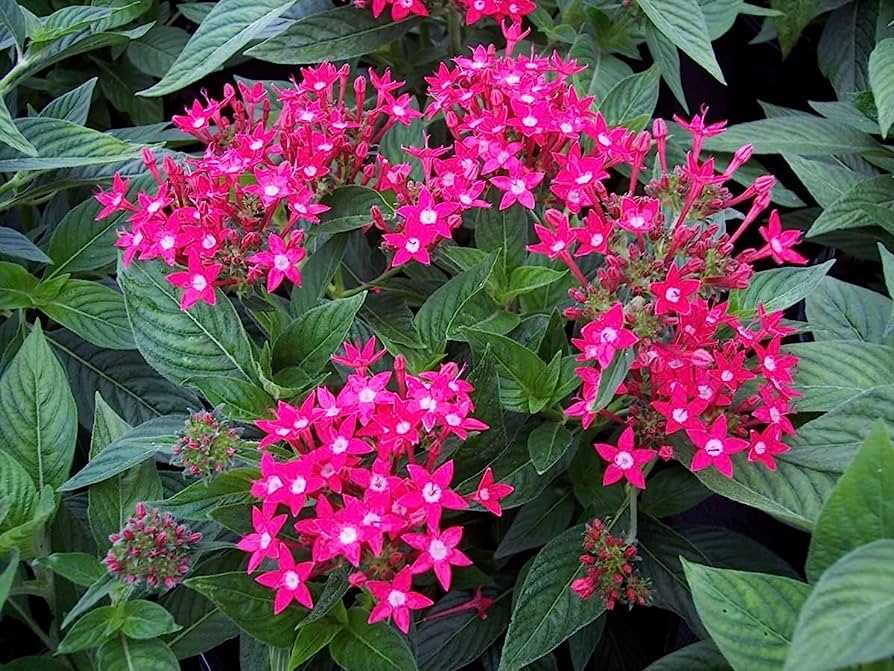
Pentas lanceolate prefers consistently moist soil, so make sure to water regularly. Water deeply, allowing the water to soak into the soil and reach the roots. However, be careful not to overwater, as this can lead to root rot. Monitor the moisture levels of the soil and adjust the watering schedule accordingly.
3. Fertilizing
To promote healthy growth and abundant blooms, fertilize Pentas lanceolate regularly during the growing season. Use a balanced fertilizer with equal amounts of nitrogen, phosphorus, and potassium. Follow the instructions on the fertilizer packaging for the correct application rate and frequency.
4. Pruning
Regular pruning is important for maintaining the shape and overall health of Pentas lanceolate. Prune the plant after each blooming cycle to encourage new growth and more flowers. Remove any dead or damaged branches, as well as any spent flowers. This will also help to prevent the plant from becoming leggy.
5. Pests and Diseases
Pentas lanceolate is relatively resistant to pests and diseases. However, it may be susceptible to aphids and whiteflies. Monitor your plants regularly and take action at the first sign of infestation. Use organic insecticides or companion planting techniques to control pest populations.
6. Lure Pollinators
One of the best features of Pentas lanceolate is its ability to attract pollinators such as butterflies and hummingbirds. To encourage pollinator visits, plant Pentas lanceolate near other flowering plants that are known to attract these beneficial creatures. This will create a beautiful and vibrant ecosystem in your garden.
7. Propagation
Pentas lanceolate can be propagated from cuttings or seeds. To propagate from cuttings, take 4-6 inch stem cuttings from a healthy plant and remove the bottom leaves. Dip the cutting in a rooting hormone and plant it in a well-draining potting mix. Keep the cutting in a warm and humid environment until roots develop. To propagate from seeds, sow the seeds in a potting mix, keep them moist, and provide warmth and light for germination.
8. Overwintering
In colder climates, Pentas lanceolate may need to be overwintered indoors. Before the first frost, carefully dig up the plant and transfer it to a pot. Place the pot in a sunny location indoors, and water and fertilize sparingly. Pentas lanceolate is not a cold-tolerant plant, so make sure to protect it from freezing temperatures.
By following these tips and tricks, you can enjoy a beautiful and thriving Pentas lanceolate plant in your garden. Its vibrant flowers and attractive foliage will surely add a touch of elegance to any landscape.
Choosing the Right Variety of Pentas lanceolate
Pentas lanceolate, also known as the Egyptian Starcluster, is a versatile plant that comes in various varieties. Choosing the right variety for your garden will ensure that you get the most out of this beautiful flower.
Factors to Consider:
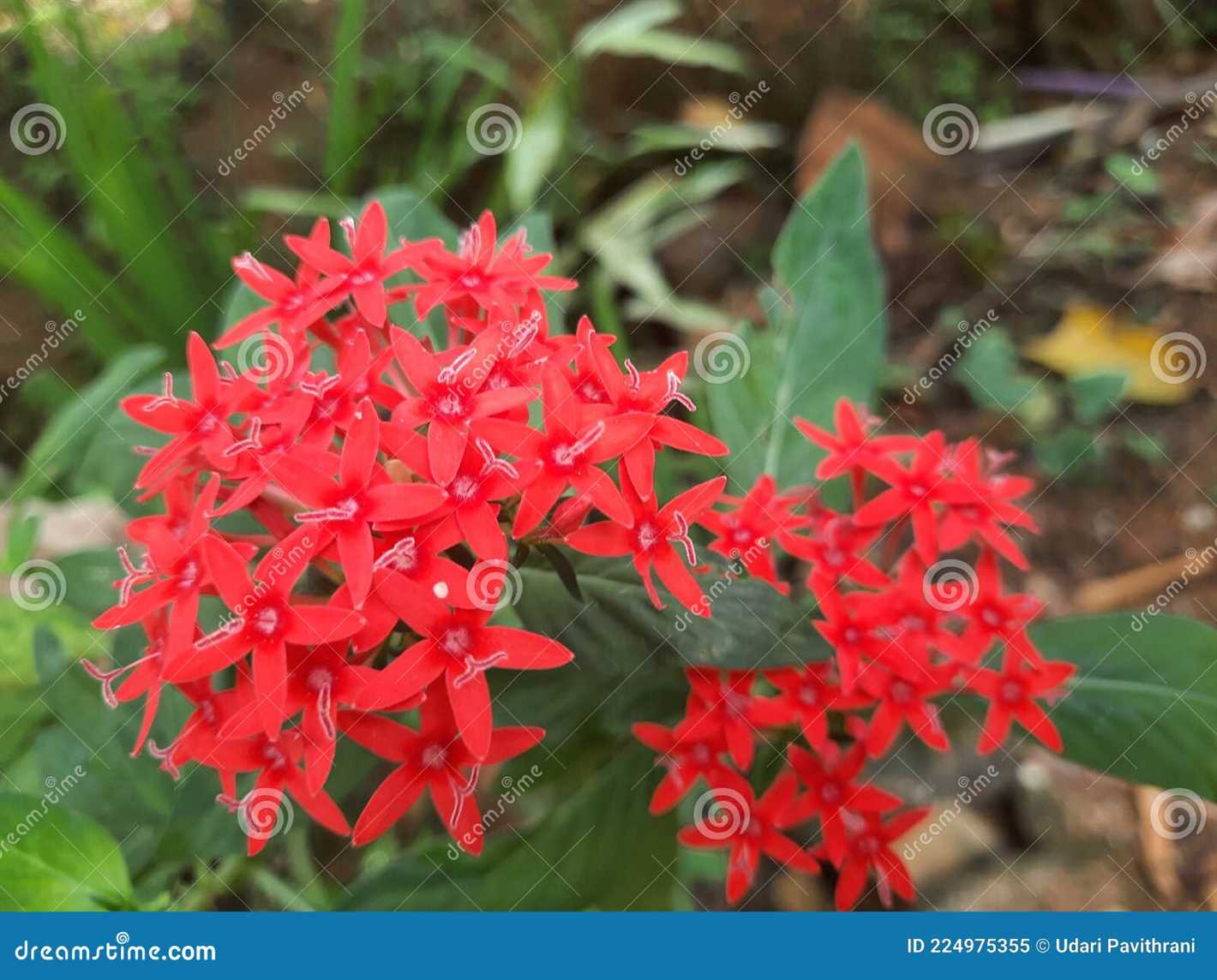
- Growing Conditions: Different varieties of Pentas lanceolate have different preferences when it comes to growing conditions. Some varieties thrive in full sun, while others prefer partial shade. Consider the amount of sunlight your garden receives and choose a variety that will thrive in those conditions.
- Height: Pentas lanceolate comes in different heights, ranging from compact varieties that grow to about 12 inches to taller varieties that can reach up to 3 feet. Choose a variety that suits the scale of your garden and the overall design aesthetic you wish to achieve.
- Flower Color: Pentas lanceolate flowers come in a variety of vibrant colors, including red, pink, purple, and white. Consider the color scheme of your garden and choose a variety that complements the other plants and flowers.
- Butterfly Attraction: Pentas lanceolate is known for its ability to attract butterflies. If you want to create a butterfly-friendly garden, choose a variety that is particularly attractive to these pollinators.
Popular Varieties:
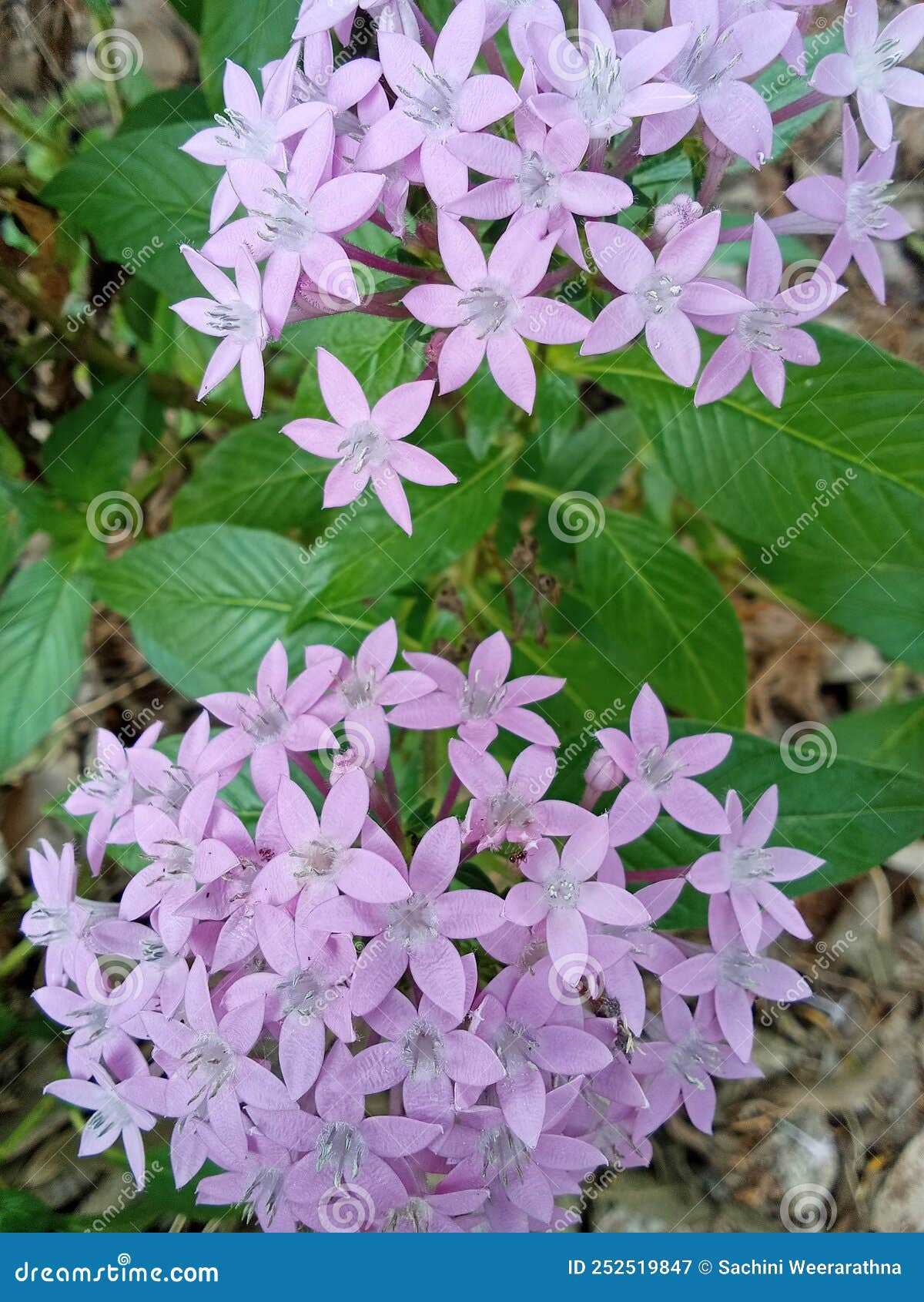
Here are some popular varieties of Pentas lanceolate to consider for your garden:
| Variety | Growing Conditions | Height | Flower Color | Butterfly Attraction |
|---|---|---|---|---|
| ‘Ruby Glow’ | Full sun to partial shade | 18 inches | Red | High |
| ‘Pink Profusion’ | Full sun to partial shade | 24 inches | Pink | High |
| ‘Lilac Lustre’ | Full sun to partial shade | 12 inches | Purple | Moderate |
| ‘Snowflake’ | Full sun to partial shade | 12 inches | White | Moderate |
These are just a few examples of the many varieties available. Consider your specific preferences and gardening needs when choosing a variety of Pentas lanceolate for your garden.
Best Soil Conditions for Pentas lanceolate
In order for Pentas lanceolate, also known as Egyptian star cluster, to thrive in your garden, it is important to provide it with the right soil conditions. Here are the best soil conditions for this beautiful flower:
Well-Drained Soil
Pentas lanceolate prefers well-drained soil that allows excess water to flow away easily. If the soil is too compacted or does not drain well, it can lead to root rot and other problems for the plant.
Loamy Soil
The ideal soil for Pentas lanceolate is loamy soil, which is a combination of sand, silt, and clay. Loamy soil provides good drainage while retaining enough moisture and nutrients for the plant.
The pH level of the soil should be slightly acidic to neutral, ideally between 6 and 7. This range provides the optimal conditions for the plant to absorb nutrients from the soil.
Fertile Soil
Pentas lanceolate thrives in fertile soil that is rich in organic matter. Adding compost or well-rotted manure to the soil before planting can help provide the plant with the necessary nutrients for healthy growth.
Soil Preparation
Before planting Pentas lanceolate, it is recommended to prepare the soil by removing any weeds or grass from the planting area. Loosen the soil with a garden fork or tiller to improve drainage and create a loose, crumbly texture.
Mulching
Applying a layer of mulch around the base of the plant can help conserve moisture, regulate soil temperature, and suppress weed growth. Use organic mulch, such as wood chips or straw, and apply it to a depth of about 2-3 inches.
By providing the best soil conditions for Pentas lanceolate, you can ensure that this stunning flower thrives in your garden and provides a beautiful bouquet plant for your enjoyment.
Watering and Fertilizing Pentas lanceolate
Proper watering and fertilization are crucial for the health and vitality of Pentas lanceolate plants. Follow these guidelines to ensure your plants thrive:
Watering
Pentas lanceolate plants require regular watering to keep the soil evenly moist. Avoid overwatering, as this can lead to root rot and other diseases. Here are some watering tips:
- Water deeply and thoroughly, ensuring the water reaches the plant’s root zone.
- Water in the morning or evening to prevent excessive evaporation.
- Monitor the soil moisture regularly and adjust your watering schedule accordingly.
- During hot and dry periods, you may need to water more frequently.
- Avoid getting the foliage wet, as this can encourage fungal diseases.
Fertilizing
Fertilizing Pentas lanceolate plants can help promote healthy growth and abundant blooms. Use a balanced, slow-release fertilizer according to the package instructions. Here are some fertilizing tips:
- Apply the fertilizer in early spring, just as new growth starts to emerge.
- Repeat the fertilizer application every six to eight weeks throughout the growing season.
- Avoid over-fertilizing, as this can lead to excessive foliage growth and reduced flowering.
- Water the plants after applying the fertilizer to help distribute nutrients to the root zone.
By following these watering and fertilizing guidelines, you can ensure your Pentas lanceolate plants receive the necessary care to thrive and provide beautiful blooms in your garden.
Pest and Disease Prevention for Pentas lanceolata
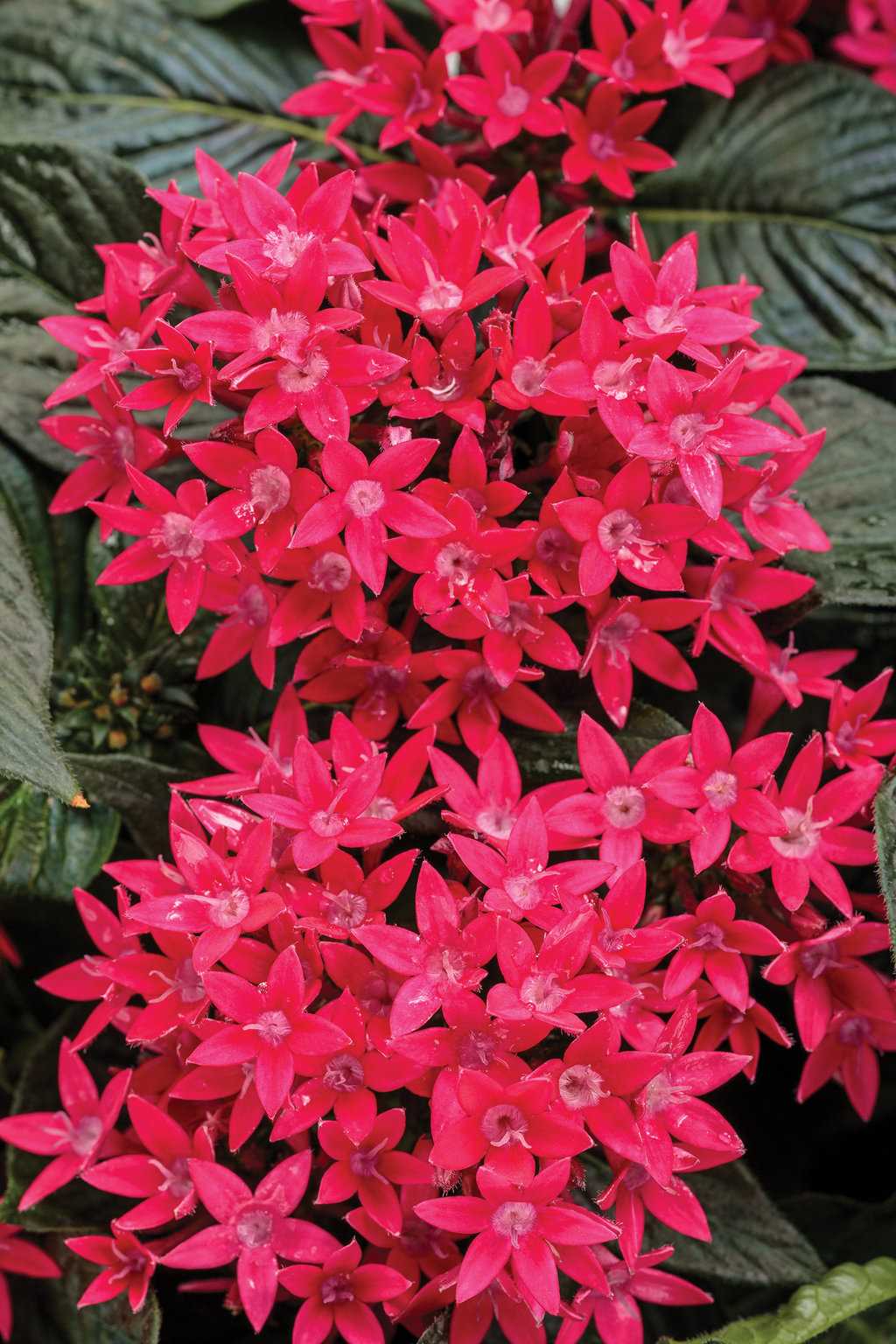
Pentas lanceolata, also known as Egyptian star flower, is a hardy and low-maintenance plant. However, like any other plant, it can be susceptible to pests and diseases. Here are some tips to help prevent and control common pests and diseases that may affect your Pentas lanceolata.
Pest Prevention
- Aphids: These small, sap-sucking insects can be a common problem for Pentas lanceolata. To prevent aphid infestations, regularly inspect your plants for any signs of aphids, such as curled or distorted leaves or sticky residue on the leaves. If you spot any aphids, you can wash them off with a strong stream of water or use insecticidal soap.
- Whiteflies: These tiny, white insects can be found on the undersides of Pentas lanceolata leaves. To prevent whitefly infestations, monitor your plants regularly and use yellow sticky traps to catch adult whiteflies. You can also spray your plants with insecticidal soap or neem oil to control whitefly populations.
- Spider Mites: Spider mites are tiny pests that can cause damage to the leaves of Pentas lanceolata. To prevent spider mite infestations, keep your plants well-watered and regularly mist them to increase humidity. You can also use insecticidal soap or neem oil to control spider mites.
Disease Prevention
- Powdery Mildew: Powdery mildew is a fungal disease that can affect Pentas lanceolata. To prevent powdery mildew, make sure your plants have good air circulation and avoid overcrowding. Water your plants at the base to keep the leaves dry and avoid overhead watering. If powdery mildew develops, you can use a fungicidal spray to control the disease.
- Root Rot: Root rot is caused by overwatering or poorly draining soil. To prevent root rot, make sure your plants are planted in well-draining soil and avoid overwatering. Allow the top inch of soil to dry out between waterings.
General Care Tips
In addition to pest and disease prevention, here are some general care tips to keep your Pentas lanceolata healthy:
- Plant Pentas lanceolata in a location with full sun to partial shade.
- Water your plants regularly, especially during dry periods.
- Fertilize your plants with a balanced fertilizer every four to six weeks during the growing season.
- Deadhead faded flowers to encourage continuous blooming.
- Prune your plants in early spring to remove any dead or damaged branches.
- Monitor your plants regularly for any signs of pests or diseases and take appropriate actions.
By following these tips, you can help prevent and control pests and diseases that may affect your Pentas lanceolata, ensuring a healthy and beautiful plant for your garden.
Pruning and Maintenance of Pentas lanceolate
Pentas lanceolate is a versatile and low-maintenance plant that can thrive in various garden settings. However, proper pruning and maintenance are essential to keep it healthy and blooming throughout the year.
1. Regular Pruning
To encourage bushier growth and more prominent blooms, regular pruning is necessary for Pentas lanceolate. Here are a few tips to keep in mind:
- Prune the plant in early spring or late winter before new growth begins.
- Use sharp and clean pruning shears to prevent the spread of diseases.
- Remove any dead or diseased stems by cutting them back to the base.
- Trim back the tips of the remaining healthy stems by one-third to one-half of their length to promote branching.
- Pinch off spent flowers regularly to encourage continuous blooming.
2. Watering and Fertilizing
Pentas lanceolate requires regular watering to keep the soil moist but not waterlogged. Avoid overwatering, as it can lead to root rot. Fertilize the plants once a month during the growing season with a balanced, slow-release fertilizer to provide essential nutrients.
3. Managing Pests and Diseases
Pentas lanceolate is relatively resistant to pests and diseases. However, it is essential to keep an eye out for any signs of common garden pests, such as aphids or whiteflies. If detected, treat the infestation promptly with an appropriate insecticide or use natural pest control methods, such as introducing beneficial insects.
4. Winter Care
In regions with frost or freezing temperatures, Pentas lanceolate may need extra protection during winter. Consider covering the plants with a layer of mulch to insulate the roots and protect them from cold temperatures. Alternatively, you can move potted Pentas lanceolate indoors during the winter months.
By following these pruning and maintenance tips, you can ensure that your Pentas lanceolate plants remain healthy, vibrant, and full of beautiful blooms all year round.
Creating Beautiful Bouquets with Pentas lanceolate
Pentas lanceolate, also known as Egyptian star cluster, is a popular plant choice for creating stunning bouquets. Its vibrant and long-lasting blooms make it an excellent addition to any flower arrangement. Here are some tips on how to create beautiful bouquets with Pentas lanceolate:
1. Choose the Right Blooms
When selecting blooms for your bouquet, look for Pentas lanceolate flowers that are fully open and have vibrant colors. The plant produces clusters of small, star-shaped flowers in a range of colors, including red, pink, white, and lavender. Consider the color scheme you want to achieve in your bouquet and choose blooms accordingly.
2. Mix and Match
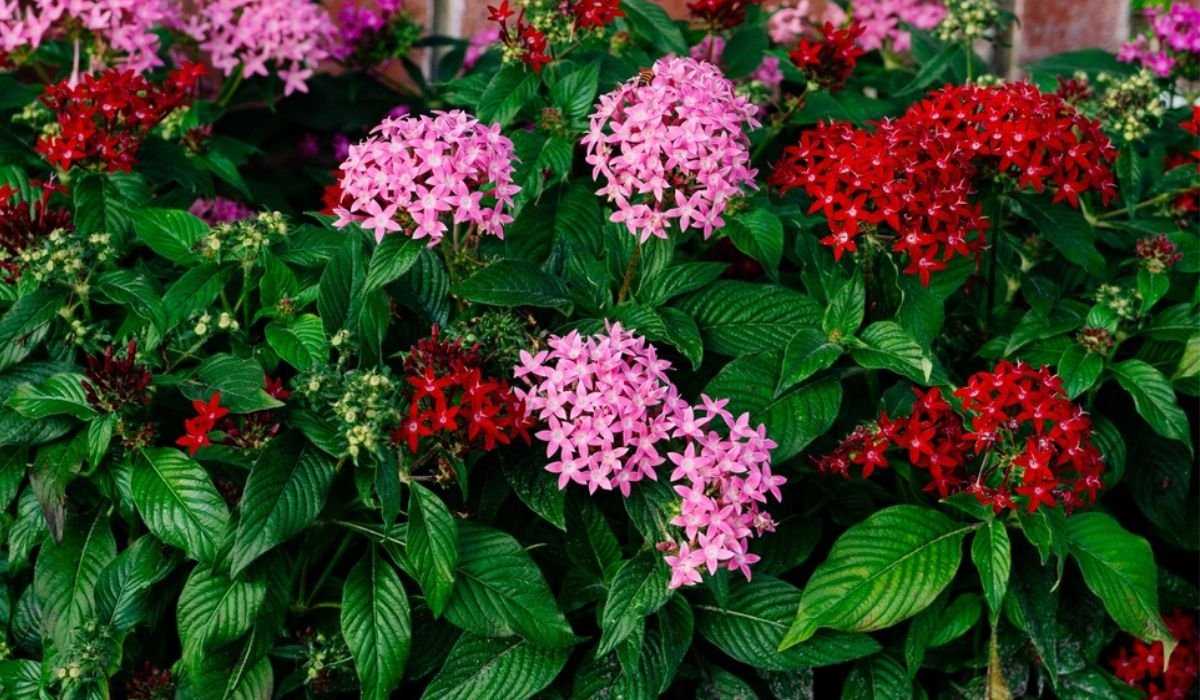
Don’t be afraid to mix and match Pentas lanceolate with other flowers to create a unique and interesting bouquet. The plant’s small flowers work well alongside larger blooms, such as roses or lilies. Consider adding some greenery, like ferns or eucalyptus, for added texture and depth.
3. Cut and Prepare the Stems
Before arranging your bouquet, cut the Pentas lanceolate stems at a 45-degree angle to ensure better water absorption. Remove any excess leaves from the lower part of the stems, as these can create a breeding ground for bacteria. Place the stems in a bucket of water and let them soak for a few hours before arranging.
4. Arrange with Care
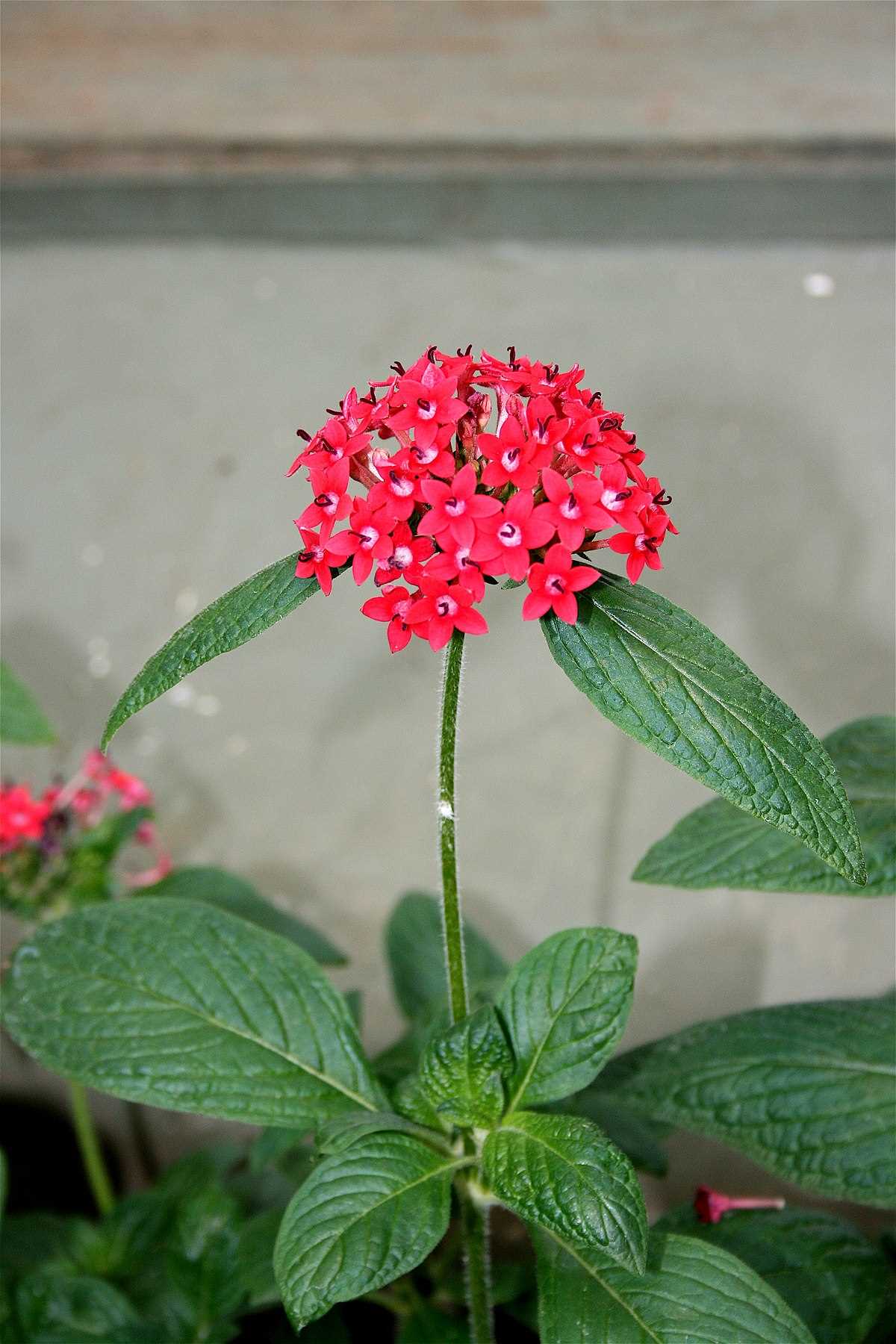
When arranging your bouquet, start with the larger blooms as focal points and then fill in with Pentas lanceolate and other flowers. Create a balanced and visually appealing arrangement, keeping in mind the height and colors of the flowers. Trim the stems as needed to achieve the desired shape and size.
5. Use a Clear Vase
Pentas lanceolate looks best when displayed in a clear vase that showcases the beauty of its stems and flowers. The vase should be clean and filled with fresh water. Change the water every few days to prolong the life of your bouquet.
6. Enjoy Your Bouquet
Once your bouquet is arranged, place it in a cool area away from direct sunlight and drafts. Enjoy the beauty and fragrance of your Pentas lanceolate bouquet for as long as possible. Consider sharing it with friends or family to spread the joy of these stunning flowers.
By following these tips, you can create beautiful bouquets with Pentas lanceolate that will brighten up any room or event. The plant’s vibrant colors and long-lasting blooms make it a perfect choice for flower arrangements. Get creative and experiment with different combinations to create your own unique bouquets.
Q&A:
What is Pentas lanceolate?
Pentas lanceolate is a type of flowering plant that is commonly used in bouquets. It is known for its beautiful clusters of star-shaped flowers in vibrant colors.
Where can I buy Pentas lanceolate plants?
Pentas lanceolate plants can be purchased at most garden centers, nurseries, or online plant stores. They are relatively easy to find and are often available in a variety of colors to suit your preferences.
Are Pentas lanceolate plants easy to care for?
Yes, Pentas lanceolate plants are generally easy to care for. They prefer well-draining soil and require regular watering. They also benefit from occasional pruning to encourage new growth and maintain a compact shape.
What are the ideal growing conditions for Pentas lanceolate?
Pentas lanceolate plants thrive in full sun or partial shade. They prefer temperatures between 70-80 degrees Fahrenheit and require regular watering to keep the soil moist. They can be grown in containers or directly in the ground, as long as they have sufficient drainage.
Do Pentas lanceolate plants attract bees and butterflies?
Yes, Pentas lanceolate plants are known for their ability to attract bees, butterflies, and other pollinators. Their colorful flowers and sweet nectar make them a popular choice for creating a pollinator-friendly garden.
Can Pentas lanceolate plants be grown indoors?
Pentas lanceolate plants are primarily grown outdoors, but they can be grown indoors as well. However, they require bright, direct sunlight to thrive indoors, so it’s important to place them near a sunny window or provide artificial light if necessary.
Video:
Butterfly Pentas — a Super Plant







